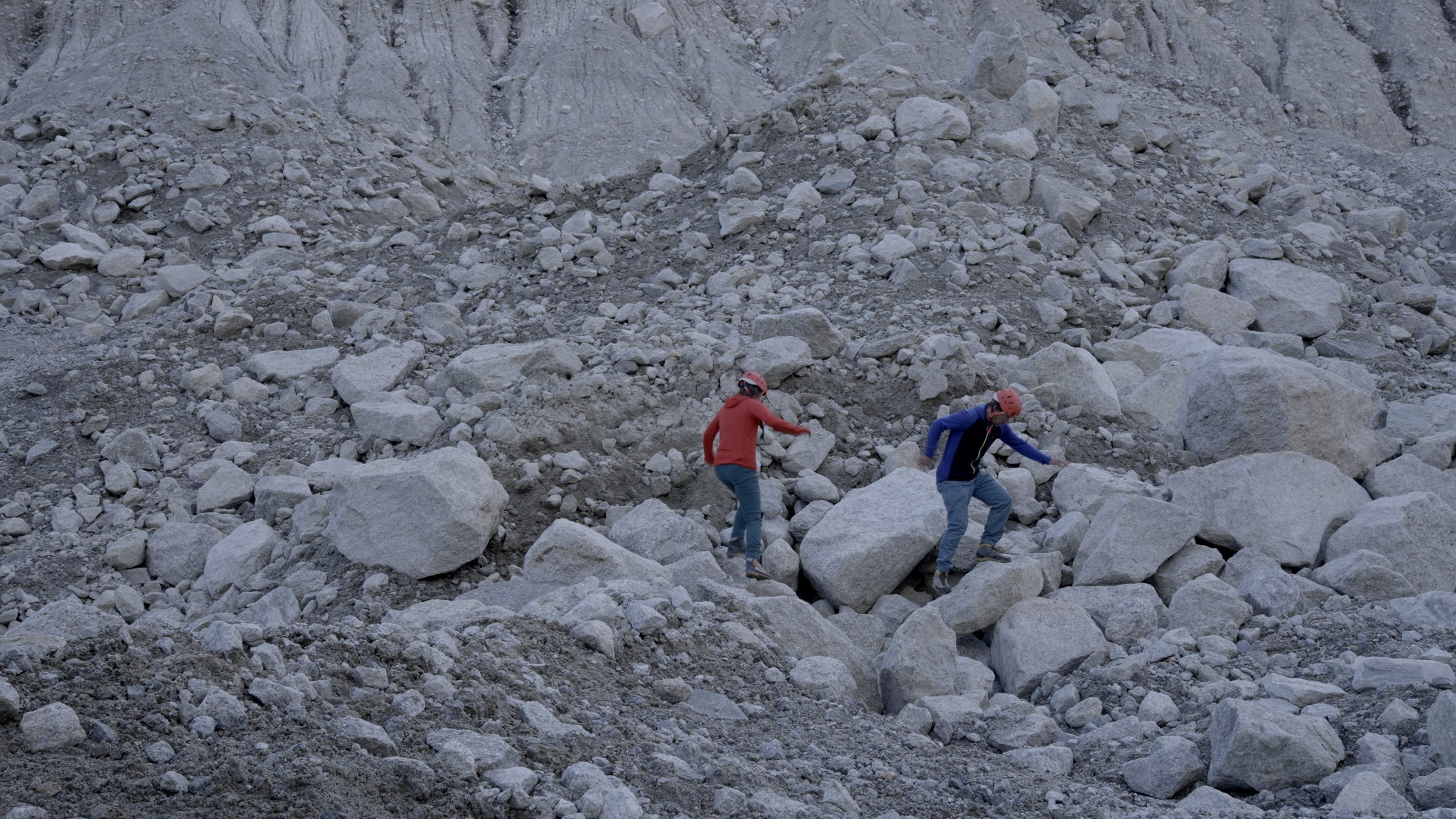For those unfamiliar with the term, what is a “moraine”, and how did the desire to make a film about it come about?
Formed from rock debris carried along by the movement of a glacier, moraines create ridges that become clearly visible as the glacier retreats. They are composed of heterogeneous sediments known as till: clays, silts, sands, pebbles, and boulders that can reach the size of a house. These sediments gradually cover Alpine glaciers, which are then referred to as “black glaciers”. After various scouting trips, I focused my project on the moraines of the Mer de Glace, which are particularly impressive, shifting, and noisy. Named at the end of the 17th century by a British explorer for its resemblance to “a lake whipped up by a strong wind and frozen solid in an instant”, the Mer de Glace is today a gaping hollow, marked by its vanished glacial mass, now replaced by a vast moraine amphitheatre. Geomorphologists are closely studying the traces and shifting behaviour of these black glaciers, whose surfaces are difficult to interpret and change rapidly.
Whereas Pacheû involved long periods of seated observation and description of mountain landscapes, Moraine is light-footed and agile, constantly in motion. How did you approach filming this, aiming to capture movement within the constraints of navigating and framing in the high mountains?
To me, Moraine takes the kinaesthetic experimentation begun in Pacheû a step further. Pacheû combined dialogue—field readings—with gestural experiments. Here, I wanted to focus on that kinaesthetic exploration: how can the cinematic image convey something that pertains to the sense of movement? To push the experimentation further, we refined the filming set-up by concentrating on one specific site: the moraines of the Mer de Glace. By bivouacking on location with a research team (performers, cinematographer, and sound engineer) I’ve worked with for several years, we were able to take the experimentation further—particularly complex in the high mountain environment.
Traversing steep slopes or narrow ridges, descending unstable ground every dayall this transforms the body, imprinting itself in muscles and joints. Where an inexperienced hiker struggles to find a path without falling or destabilising the ground underfoot, Sarah and Laurent play with the void, with verticality and the instability of the terrain, attuned to what their whole sensory field is telling them. How can one convey, through cinematic language, something that takes place more at the level of proprioception or kinaesthesia? In the tradition of studying movement through images, I develop precise choreographic and cinematic experimental set-ups. The bodies are engaged with the material within relatively small zones (a bit like the scale of a dance stage).
How did you approach the editing of image and sound?
As a video artist, sound is just as important to me as image. In the video research for Moraine, we began by capturing the sonic envelope of this gaping hole in the mountain –transformed into a true echo chamber. With my sound engineer, we made ambisonic recordings of the Mer de Glace, but also near another glacier: facing the steep drop of the Bionnassay glacier, where one hears a multitude of tiny collapse sounds and a range of resonances. Every gravel slide, rockfall, or breaking serac shatters and slips down slopes of varying lengths, plunges into crevasses of varying widths.
There’s a strange disjunction between the visual impression of this glacial leviathan, seemingly frozen for hundreds of years, and the sound, which reveals its constant motion, conjuring the image of a hidden, subterranean city in motion. These sounds exist on the surface and in the crevices of the Mer de Glace, but they’re often masked by the roaring of countless waterfalls. We also captured the different textures of meltwater flows in moulins and rustlings along the ice walls. The editing and then sound mixing were meticulous, delicate work—an attempt to share the materiality and complex sonic environment of this shifting world.
Interview by Jean-Paul Felley and Nathan Letoré
